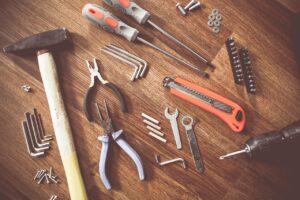In the world of business, equipment breakdowns and repairs are inevitable. When your machinery or essential equipment requires repairs, it can disrupt operations and put a strain on your finances. To ensure that your business can quickly recover and resume normal operations, it’s crucial to have a plan for seeking funding to cover equipment repairs. In this article, we’ll explore strategies and considerations for obtaining the necessary funds to address equipment issues.
**1. Assess the Urgency of Repairs
The first step in seeking funding for equipment repairs is to assess the urgency of the situation. Determine whether the equipment failure is causing an immediate halt to production, posing safety risks, or impacting customer service. Urgent repairs may require a faster funding solution, while less critical issues may allow for more time to explore options.
**2. Review Your Business Financials
Before seeking funding, take a close look at your business’s financial health. Assess your current cash flow, available reserves, and the impact that equipment repairs will have on your bottom line. Understanding your financial position will help you determine the amount of funding required and the urgency of obtaining it.
**3. Consider Available Funding Sources
Several funding options are available to cover equipment repairs, including:
- Cash Reserves: If your business has built up cash reserves, consider using these funds to cover repair costs. This option avoids taking on additional debt or giving up equity.
- Business Loans: Traditional business loans from banks or credit unions can provide a lump sum of capital to cover repairs. These loans typically offer fixed interest rates and repayment terms.
- Lines of Credit: Business lines of credit are flexible financing options that allow you to borrow funds as needed. They can be a valuable resource for managing unexpected expenses, such as equipment repairs.
- Equipment Financing: If the repair involves a specific piece of machinery, consider equipment financing. This option allows you to purchase or repair equipment with a loan secured by the equipment itself.
- Merchant Cash Advances (MCAs): MCAs offer quick access to capital by advancing a lump sum in exchange for a percentage of future credit card sales. While they can be convenient, be mindful of their higher costs.
- Asset-Based Lending: If your business has valuable assets like inventory or accounts receivable, asset-based lending can provide financing based on the value of these assets.
- Government Grants and Programs: Depending on your industry and location, there may be government grants or programs that provide financial assistance for equipment repairs or upgrades.
- Business Credit Cards: In some cases, using a business credit card with a sufficient credit limit can cover equipment repair costs. Be mindful of interest rates and repayment terms.
**4. Calculate the Cost of Repairs
Determine the precise cost of equipment repairs by obtaining quotes from reliable repair service providers or equipment suppliers. It’s essential to have a clear understanding of the expenses involved to determine how much funding you need.
**5. Evaluate Funding Terms
When considering different funding options, pay close attention to the terms and conditions. Factors to consider include:
- Interest Rates: For loans and lines of credit, compare interest rates to ensure you’re getting a competitive deal.
- Repayment Terms: Understand the repayment schedule and whether it aligns with your cash flow.
- Fees: Be aware of any fees associated with obtaining funding, such as application fees, origination fees, or prepayment penalties.
- Collateral Requirements: Some funding options may require collateral, such as assets or personal guarantees. Evaluate the risks associated with these requirements.
**6. Create a Funding Plan
Based on your financial assessment and the cost of repairs, create a funding plan that outlines the following:
- Funding Source: Specify the funding option you will pursue, whether it’s cash reserves, a loan, a line of credit, or another source.
- Funding Amount: Determine the exact amount of funding you need to cover equipment repairs and associated costs.
- Timeline: Establish a timeline for obtaining the funding and initiating the repairs. Factor in any lead times for loan approval or application processing.
- Repayment Strategy: If you’re borrowing funds, outline your repayment strategy. Ensure that your business can comfortably manage the debt without straining cash flow.
**7. Apply for Funding
Once you’ve developed a funding plan, proceed with the application process for your chosen funding source. Be prepared to provide necessary documentation, such as financial statements, business plans, and repair quotes. Thoroughly review the application to ensure accuracy and completeness.
**8. Explore Vendor Financing
If your equipment repair involves specialized machinery or technology, the equipment supplier or manufacturer may offer financing options. Vendor financing can be a convenient and tailored solution, often with competitive terms designed specifically for the equipment in question.
**9. Negotiate with Repair Service Providers
When dealing with repair service providers, don’t hesitate to negotiate. Discuss pricing, payment terms, and any available discounts. Some repair companies may offer payment plans or financing options to help businesses cover repair costs.
**10. Emergency Funding Considerations
In cases of urgent equipment breakdowns that threaten business continuity, consider emergency funding options, such as short-term loans or merchant cash advances, even if they come with higher costs. The priority is to restore operations quickly and minimize downtime.
**11. Implement Preventive Maintenance
While seeking funding for necessary equipment repairs is essential, it’s equally important to implement preventive maintenance practices to minimize the likelihood of future breakdowns. Regular maintenance can extend the lifespan of equipment and reduce the frequency of costly repairs.
**12. Plan for Contingencies
Incorporate contingency planning into your business strategy. Establish an emergency fund or line of credit specifically designated for unexpected expenses, including equipment repairs. This proactive approach can help your business remain resilient in the face of unforeseen challenges.
Equipment breakdowns are an inevitable part of running a business. When faced with the need for equipment repairs, it’s crucial to have a well-thought-out plan for seeking funding. Assess the urgency of the repairs, evaluate your financial health, explore funding options, and create a funding plan that aligns with your business’s goals and financial capabilities. By taking a strategic approach to equipment repair funding, you can minimize disruptions, maintain business continuity, and position your business for long-term success

